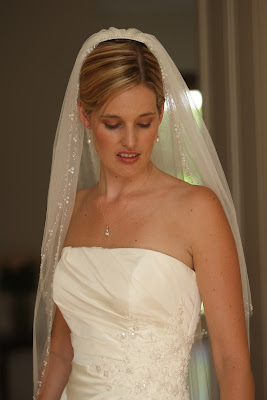The same stitch often appears in different guises on different types of embroidery. Consider cable stitch. The smocking on a little dress I made a few years ago had borders of cable stitch.
The red stitch along the top and bottom edges of the smocking is the row of cable stitch.
Cable stitch is also widely used on surface embroidery as a line stitch. You can see how to work it in the video over on Sarah's Hand Embroidery here.
I wouldn't however immediately connect smocking and Ukrainian whitework.
 |
| My Ukrainian whitework sample |
But Gay Eaton makes this interesting link in Border 7 in her book titled Ukrainian whitework.
The stitch that caught my interest there is known as Merezhka Verkhoploot. To work the stitch, several threads are first cut and withdrawn. Then rows of cable stitch, just like the well known smocking stitch, are worked over the cut area. Interestingly because the cable stitch is worked in close rows it gives a solid look that belies the fact that it is a drawn thread stitch. Yet it does bear a resemblance to smocking. (The border below is finished off with ladder hemstitch.)
So a surface line stitch, a smocking stitch, and a drawn thread stitch used for Ukrainian whitework all have very strong links! Cable stitch is adapted and used on all three different types of embroidery.
Unfortunately stitch names can be confusing. There's another stitch also called cable stitch! It's a pretty variation of chain stitch and looks something like this : O-O-O-O-O. It's a looped stitch and it is a completely different type of stitch to a cable stitch used in smoking and to Merezhka Verkhoploot.
On a local note we are having a heatwave and it's still officially winter. The temperatures have been like those we usually experience in mid summer. Although I'm enjoying the break from the cold, I wonder what summer will be like.
'Till next time, happy stitching!


































